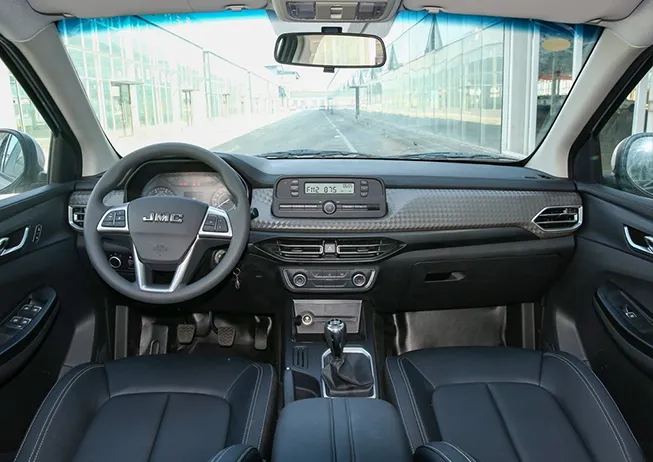Exploring the Role of Internal Combustion Engines in Modern Passenger Vehicles
The Evolution and Future of Internal Combustion Engine Passenger Vehicles
Internal combustion engines (ICE) have been the cornerstone of passenger vehicle design for over a century. Their development has significantly shaped the automotive landscape, providing mobility to millions around the globe. While alternative propulsion systems such as electric and hydrogen fuel cells gain attention, the inherent advantages and advancements in ICE technology continue to play a crucial role in passenger vehicles.
Historical Context
The history of the internal combustion engine dates back to the late 19th century, when inventors like Karl Benz and Henry Ford revolutionized personal transportation. The advent of the mass-produced automobile led to an era of unprecedented mobility and shaped societal structures. The ICE operates by converting the energy stored in fuel into mechanical work, powering the vehicle's wheels through a series of controlled explosions within the engine's cylinders. This technology quickly became favored due to its ability to deliver high performance, convenience, and efficient range.
Technological Advancements
Over the decades, considerable advancements have been made in ICE technology. Modern engines are equipped with sophisticated control systems that optimize fuel efficiency and reduce emissions. Turbocharging and direct fuel injection, for example, enhance power output while improving thermal efficiency. Additionally, innovations such as variable valve timing allow for better performance across various driving conditions.
Emissions technology has also evolved significantly. With stricter environmental regulations globally, manufacturers have developed systems such as catalytic converters and particulate filters to minimize harmful outputs. The introduction of hybrid systems, which combine ICE with electric power, further pushes the boundaries of traditional engine capabilities, creating a more efficient and environmentally friendly driving experience.
Market Dynamics
internal combustion engine passenger vehicles

Despite the rise of electric vehicles (EVs), the internal combustion engine remains a prevalent choice for consumers around the world. Factors such as infrastructure, affordability, and driving range contribute to this continued preference. In many regions, the availability of charging stations remains limited, making ICE vehicles a more practical option for long-distance travel. Moreover, the lower upfront costs of ICE vehicles, compared to most EVs, appeal to budget-conscious consumers.
Additionally, in emerging markets, where economic growth leads to increased vehicle ownership, ICE vehicles are often seen as more accessible options. The variety of models, powertrains, and technologies available in the ICE market also provides consumers with a plethora of choices, catering to diverse preferences and budgets.
The Future of Internal Combustion Engines
As the automotive industry pivots towards sustainability and carbon neutrality, the future of internal combustion engines will inevitably evolve. Some manufacturers are committing to phasing out ICE vehicles in favor of electric alternatives, aligning with global climate goals. However, many experts believe that ICE technology will not be completely relegated to the past anytime soon.
Innovations in biofuels and synthetic fuels present a potential pathway for ICE vehicles to continue playing a role in sustainable transportation. These fuels can be utilized within existing engine technology, allowing for a gradual transition away from fossil fuels without necessitating a complete overhaul of the vehicle fleet.
Additionally, ongoing advancements in hydrogen combustion engines provide an intriguing glimpse into a future where ICE technology could coexist with zero-emission goals. Hydrogen-powered vehicles emit only water vapor, presenting a compelling alternative for those seeking to leverage existing engine designs while reducing environmental impact.
Conclusion
The internal combustion engine has proven to be a resilient and adaptable technology within the realm of passenger vehicles. While the automotive landscape continues to shift towards electric and alternative fuel sources, ICE vehicles still offer strong performance, affordability, and convenience. As manufacturers innovate and the market dynamics evolve, it is likely that ICE technology will continue to coexist with new propulsion systems for years to come. The challenge lies in ensuring that this evolution occurs in harmony with global aspirations for environmental sustainability and reduced emissions. Thus, while the spotlight may increasingly shine on electric vehicles, the legacy and adaptation of internal combustion engines will undoubtedly remain a significant chapter in the story of transportation.
-
SINOTRUK HOWO 84 Electric Dump Truck for Eco-Friendly Heavy HaulingNewsJul.26,2025
-
The Fast 16-Gear Manual Transmission Assembly for Heavy TrucksNewsJul.25,2025
-
Mercedes Benz Actros 1848 42 Tractor Truck for Sale - Reliable PerformanceNewsJul.24,2025
-
High-Quality Water Pump Assembly for Sinotruk Trucks – Durable & ReliableNewsJul.23,2025
-
Premium Truck Engine Antifreeze Coolant Fluid for Heavy Duty VehiclesNewsJul.22,2025
-
FOTON View G7 Mini Bus: Affordable & Spacious TransportNewsJul.22,2025
Popular products

























